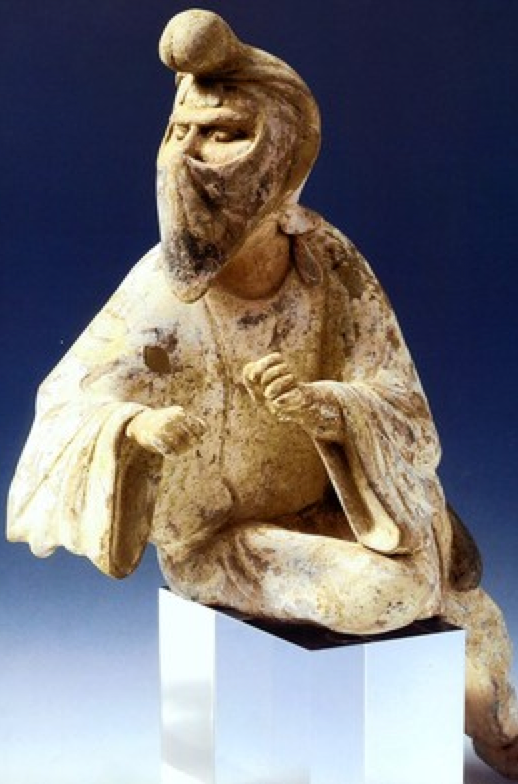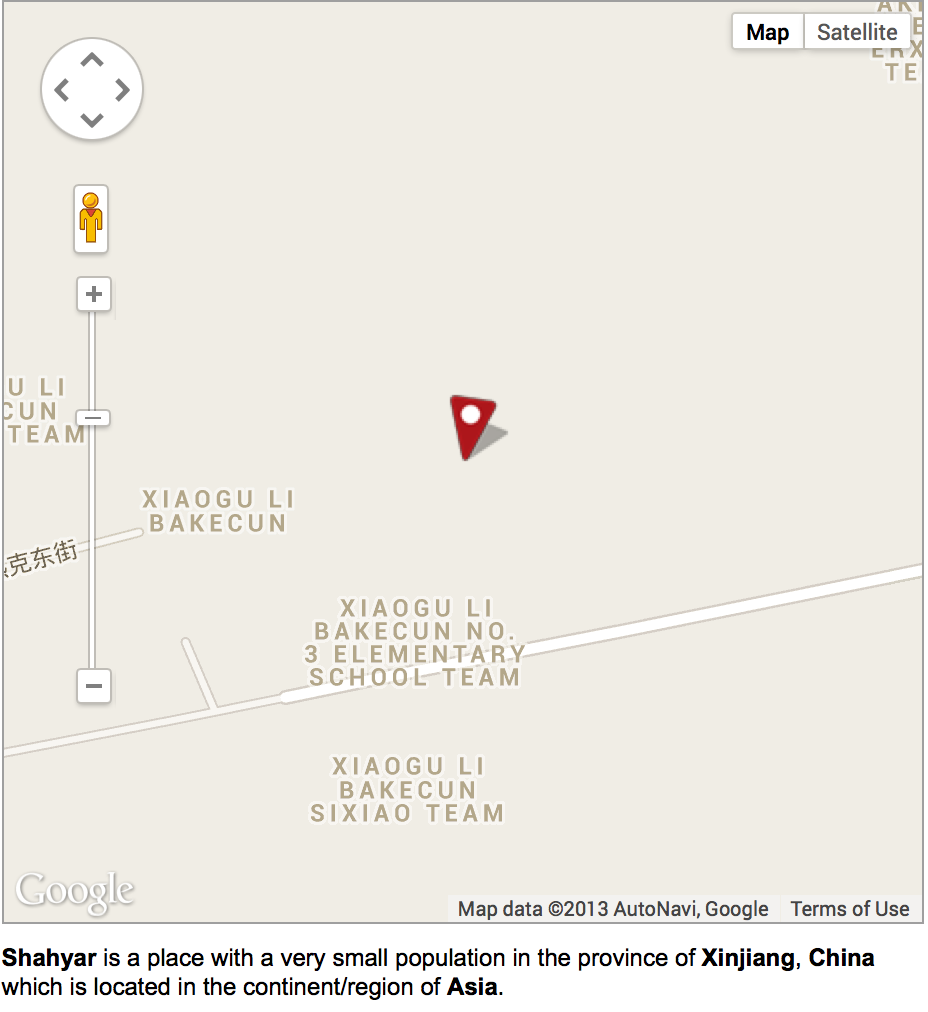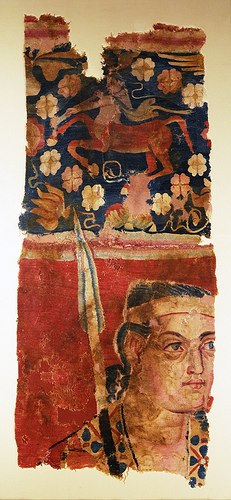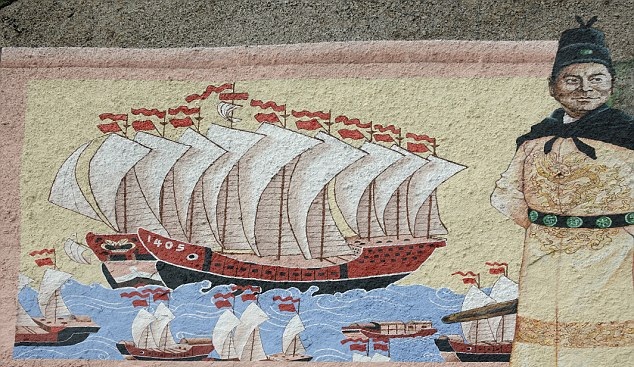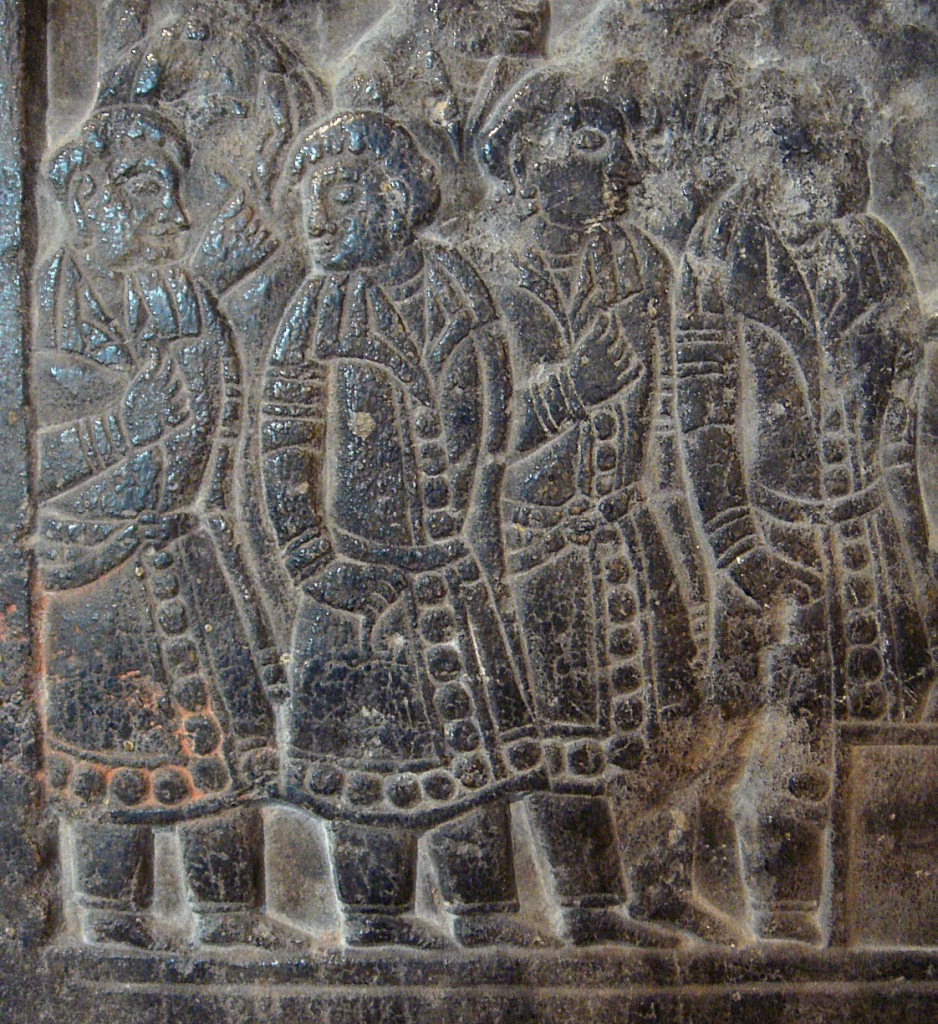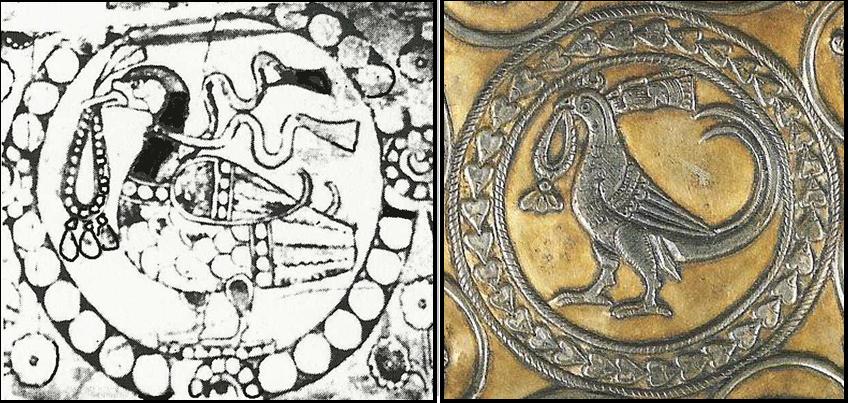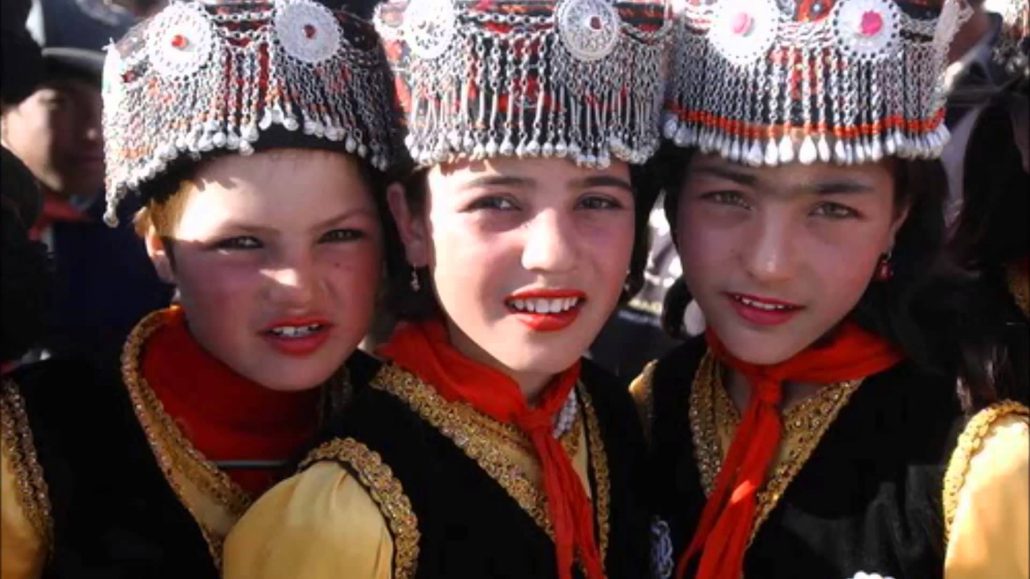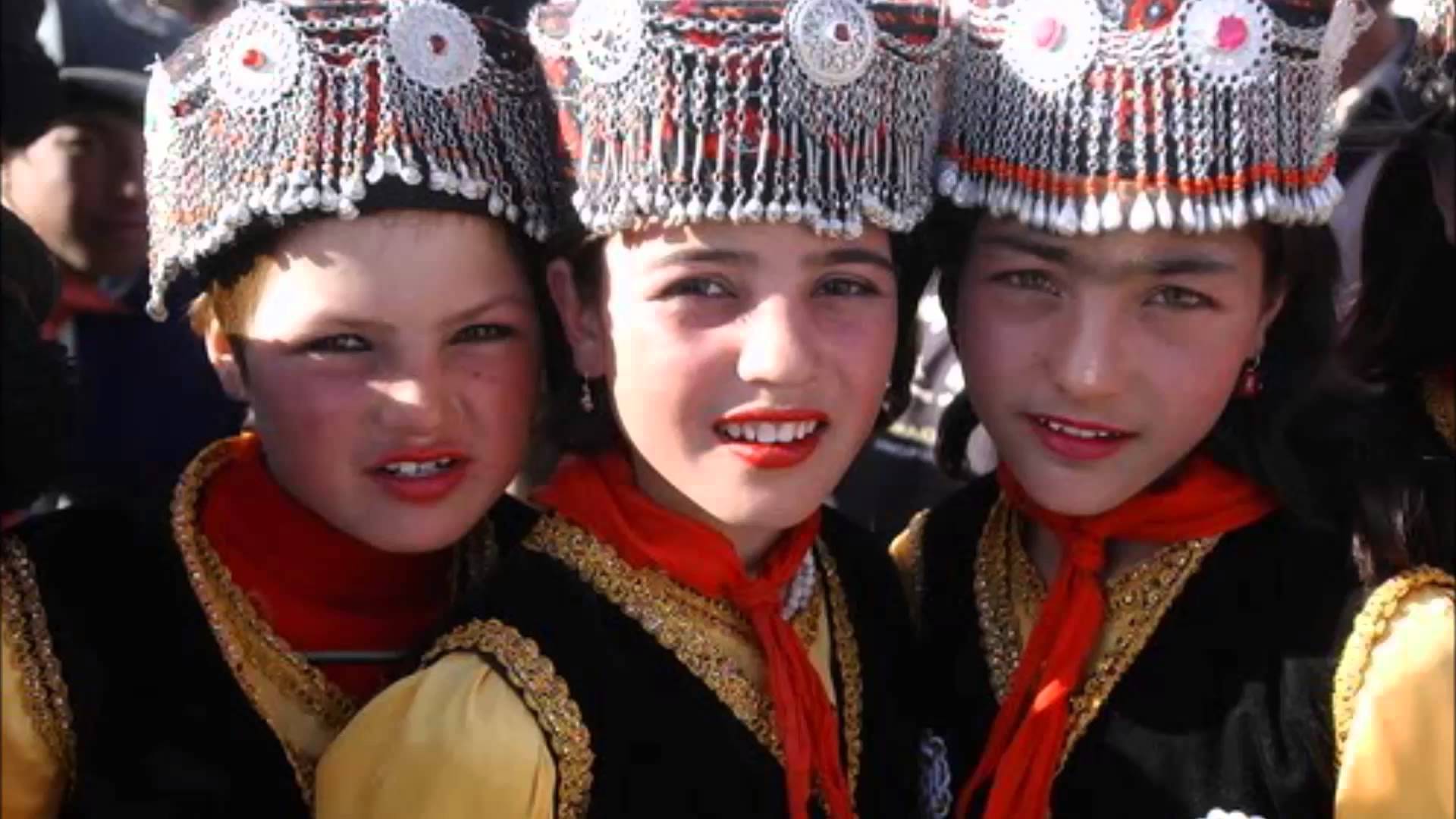The article below “Pirooz in China: Defeated Persian army takes Refuge” was originally written by Frank Wong in August 11, 2000 and posted in the CAIS venue hosted by Shapour Suren-Pahlav in London. Kindly note that the images and accompanying descriptions below do not appear in the original posting in CAIS.
==============================================================
I read the story of Pirooz written in a formal and ancient aristocratic Chinese language. It was quite tough, but with the help of my Chinese friends and associates I got through it. It was written by Prince Nah-shieh (Narseh), who was the son of Prince Pirooz, who was the son of King Yazdgerd III– the last Sasanid king of Persia. Narseh was a Chinese general stationed in the Tang Chinese military garrisons.
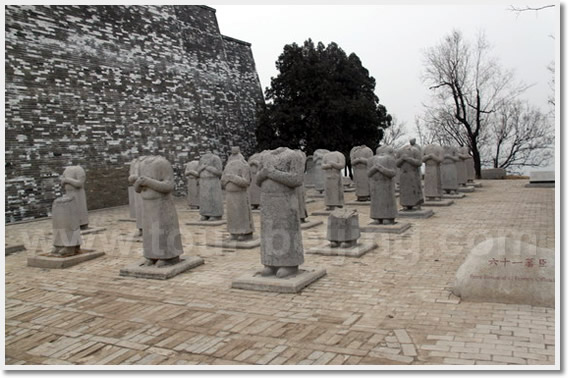
Visitors to the tomb of Emperor Gaozong (r. 649-683 CE) of the Tang dynasty (618-907 CE) will see that one of the statues guarding the emperor as depicted above has the name of Sassanian prince Peroz (d. 679 CE) (Picture source: Tour Beijing). Peroz was crowned in China after the Arab invasion which toppled the Sassanian Empire in 637-651 CE. There is a tomb and statue in China which bears this inscription: Peroz, Shah of Iran, crowned in Tang dynasty court: Commander-in-chief of Iranian Army, Martial General of the Right In 751 A.D., the Chinese lost a decisive battle to the Arabs at Talas (now in Uzbekistan), and they retreated from their colonies in Central Asia. All the garrisons shut down, and the armies fled back into China. Many Persians and Sogdians followed the Chinese back into China and abandoned their homes in Central Asia in wake of the Muslim Arabic invasions. Some Sogdians came as widows who then married Chinese soldiers along with their orphaned children. The above figure is from a Tang dynasty burial site, now housed now at the museum at Turin, Italy. Curators and scholars continue to debate the figure’s origins; one possibility is that he was of Iranian descent (Picture source: The Wall Street Journal). Narseh recounts in his diary of how his father set foot in China around the 660s A.D. Pirooz was only a little boy when the Arabs beheaded his father. Pirooz, scared and was awaiting the help of Chinese armies. He had written to his sister who was the wife of the Chinese emperor. With the Arab armies in sight, he waited no longer. They decided to cross the Pamirs. Their families along with other noble Persian clans and the soldiers crossed the treacherous snowy mountains. Many of the imperial treasures were either abandoned or lost. Recently, Chinese research teams recovered some of the lost items. They are now housed in various museums in Beijing or Taiwan. Pirooz finally made it to China. In the Chinese capital, he encountered long-established Persian, Sogdian, and Bactrian merchant communities in China. He was accompanied into the imperial palace. Going through the long and beautiful halls. At last, he saw the Chinese emperor seated on a high golden throne wearing golden boots and robes. The little boy Pirooz knelt and prostrated before the emperor. The emperor then picked up the boy Pirooz and embraced and kissed him on the cheeks. He said: “You’ve come a long way. Have no more fears. For you are my brother and this is your new home.” With tears in his eyes, Pirooz knelt again and thanked the emperor. The emperor then allowed Pirooz and his people to settle in 38 villages and rebuild their communities. They were allowed to set up a mini royal court in exile. As noted in the above Google Maps description: “Shahyar is a place with a very small population in the province of Xinjiang, China which is located in the continent/region of Asia”. Cities, townships and locales close to Shahyar include ShorYar, Xayar, Schahjar and Chahyar. The closest major cities include Aksu, Yining, Shihezi and Urumqi (Urumchi). Pirooz learned Kung Fu (martial arts) and grew up to be a general in the emperor’s court. Chinese armies still held military garrisons in areas of what are today’s Tajikistan, Afghanistan and parts of Uzbekistan. The Chinese emperor never allowed Pirooz to be stationed there because he knew that he would immediately cause trouble with the Arabs. However, Pirooz financed most of the garrisons there with his own money. When the Chinese emperor died, Pirooz and his son Narseh were allowed to be stationed on western border garrisons by the new Chinese emperor. Immediately, they started to clash with the Umayyad Arabs. They solicited the aid of Turkish tribes and fought border skirmishes against the Arabs. Pirooz died sometime around 700 A.D. He was buried facing west. People in China today still don’t know where his resting place is located. Some say that he was buried atop the Pamir mountains so that he could be close to the spirit of his father and where he got killed by the Arabs. But, in the diary, Narseh says: “Pirooz requested only a simple burial and the Chinese emperor approved. The entire exiled court was in attendance along with the Chinese emperor. The Chinese emperor held Peroz’s shaking hands. Pirooz looked west and said: “I have done what I could for my homeland (Persia) and I have no regrets.” Then, he looked east and said: “I am grateful to China, my new homeland.” Then he looked at his immediate family and all the Persians in attendance and said: “Contribute your talents and devote it to the emperor. We are no longer Persians. We are now Chinese.” Then, he died peacefully. A beautiful horse was made to gallop around his coffin 33 times before burial, because this was the number of military victories he had during his lifetime. Pirooz was a great Chinese general and great Persian prince devoted and loyal to his people. A rectangular piece of tapestry coming from the Xingjian Ughur Autonomous Region of China clearly showing Sasanian Persian influences in design and artwork. The physiognomy of the person drawn in the tapestry is Caucasoid as opposed to Asiatic, indicative of the strong Indo-European presence in the region since proto Indo-Europeans (i.e. the Tocharians) first entered the region thousands of years ago (Picture source: Houston Museum of Natural Science). Several Western researchers however suggest that the person depicted above is a Greek. Narseh’s daughters and sons all married into Chinese royalty and aristocracy. This was the case with all the noble Persian exiles in China. The great spirit of Persia is now in China, and all the Chinese people appreciate it. This was the story of Pirooz, and how he ended up in China. I have studied another topic regarding the similar features often seen in both Persian and Chinese art. I know that the style was brought into Persia by Chinese artisans during Mongol (Ilkhan Period) in the 13th cent. A.D. When Kublai Khan conquered China, he “kicked out” and sent away all the former army, government officials, tax collectors, engineers, scientists, artisans, musicians and court doctors of the defeated Chinese Sung Dynasty. All these Chinese were sent to Hulagu Khan’s (Kublai’s brother) court in Persia. Kublai didn’t trust the native Chinese, so he eliminated the elite and sent them away to distant parts of the Mongol empire. In return, he transported many soldiers from Turkestan (Central Asia), tax collectors, scientists and government officials (from both Turkestan and Persia), Armenian and Jewish merchants all into China to serve his court. The story of Marco Polo is a vivid example. Chinese Admiral Zheng He who was of Persian descent. Zheng He is recognized for having sailed with his giant fleet to Europe and Africa. (Source: Chris Heller/CORBIS & The Mail). While in Persia, the Chinese officials and soldiers served their Mongol masters well. The Ismaili castles were very well fortified and the Mongol horsemen did not know how to break through the thick walls. They were only accustomed to lightning sieges and quick attack. Thus, they had to use Chinese siege machines and engineers along with Chinese foot infantrymen. The Chinese general Kuo Kan helped the Mongols very much in Persia. He then went to put down rebellions in Georgia. Then, his armies were crucial for the Mongol destruction in Syria and Iraq. Only recently, they found the grave of General Kuo Kan in Azerbaijan where his armies reportedly retired and settled. A Chinese Qi depiction of Soghdians (Picture and caption from Kaveh Farrokh’’s lectures at the University of British Columbia’s Continuing Studies Division and were also presented at Stanford University’s WAIS 2006 Critical World Problems Conference Presentations on July 30-31, 2006). The Chinese had intimate relations with Persia since the Arsacid Dynasty in Iran. Camel and donkey caravans travel back and forth both directions for almost a thousand year before the coming of Islam to this region. People mixed with each other without regards to race and color. The Chinese have a prevalence of the hereditary thalassemia disease also common throughout the Middle East and India. Other Asians such as Japanese and Koreans don’t have much occurrence of this blood disease. Tse-Niao (Bird) motif mural painting in Kizil, Sinkiang, 6-7th Centuries AD. (left) and a Pheasant as depicted in late Sassanian arts 6-7th Centuries CE (Slide and caption from Kaveh Farrokh’’s lectures at the University of British Columbia’s Continuing Studies Division and were also presented at Stanford University’s WAIS 2006 Critical World Problems Conference Presentations on July 30-31, 2006). This demonstrates that color did not have meaning in the past. There is even a tradition in Armenia, that says one of their lordly families (the Mamikonians) were originally descended from Chinese princes who fled to Persia and sought refuge after an unsuccessful rebellion in China. I am still doing some research on this. In fact, it was common in the past for both Chinese and Persian aristocracy to intermarry. The sister of Pirooz was married to the Chinese emperor as an example. Unfortunately, Arsacid and Sasanid records are scarce because the rulers of Persia never have the habit of keeping track records. After the Arab invasions and Islam, the trade ceased. It was revived a little bit during the Mongol period, but it was never the same. Chinese girls of ancient Iranian descent (Source: Iranian People Of China (中国的伊朗人) ). Well, this much I can say. I just wanted to give a description of what happened in the past. Back then, China and Persia were the dominant civilizations on earth. Children should know about this and be proud.